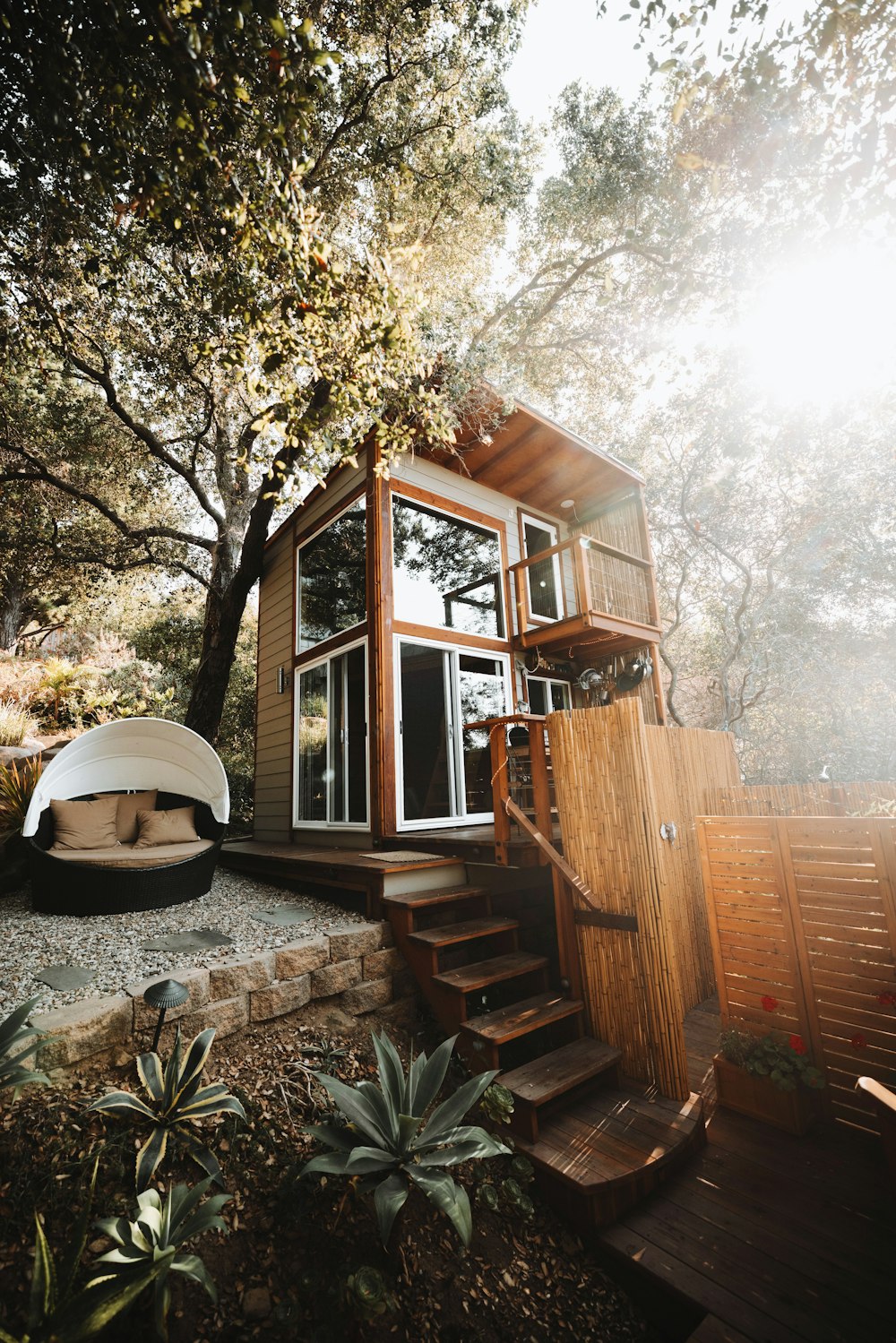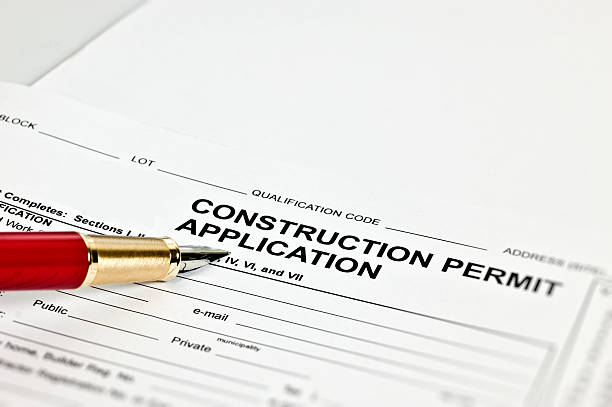
Tiny homes have been making a big impact on the housing market, offering a more affordable and sustainable living option for many.
Whether you’re considering living in a tiny home as your primary residence or interested in the legalities of having one as an accessory dwelling unit (ADU) in New York State, it’s crucial to understand the legal landscape surrounding tiny homes.
In recent years, New York has made strides in acknowledging the need for alternative housing options, with the adoption of Appendix Q within its Residential Code. This addition has paved the way for tiny homes, recognized as ADUs, to be permitted in certain counties across the state, offering new opportunities for prospective homeowners and property developers.
However, while this progress has provided clarity on the legality of tiny homes as ADUs, navigating the specific zoning laws, building codes, and land use regulations for tiny homes in New York still requires careful consideration. Understanding the nuances of property regulations and the legal challenges of tiny house living will be essential for anyone looking to embrace the tiny home movement within the state.
As we delve deeper into the legal considerations for tiny house owners, we’ll explore the current landscape of tiny home legalization efforts in New York, shed light on the intricacies of obtaining tiny house permits, and highlight the advocacy groups working to support and promote the tiny home community within the state.
Additionally, we’ll address common questions, such as the cost of tiny homes in New York, the possibility of parking a tiny house in New York City, and the feasibility of permanent residency in a tiny home.
Through this exploration, we aim to provide a comprehensive overview of the legalities of tiny homes in New York State, equipping you with the knowledge needed to navigate the intricacies of tiny house living in the Empire State.
Explaining the Tiny Home Movement
The tiny home movement is an architectural and social trend that has gained significant attention in recent years. It’s essentially a lifestyle choice that advocates for downsizing living spaces, simplifying lifestyles, and reducing the emphasis on material possessions.
This movement has been fueled by various factors, including a desire for financial freedom, environmental concerns, and a shift towards a more minimalist way of living.
Understanding the Tiny Home Movement
The concept of living in smaller, more efficient spaces has gained traction as people seek alternatives to traditional homeownership. The idea is to embrace a simpler way of life, focusing on experiences and sustainability rather than excessive consumption. The trend has sparked a sense of community and creativity, with individuals and families choosing to adopt a minimalistic approach to housing.
Relevant Links
- What Is The Tiny House Movement? Why … – This article provides a detailed overview of the tiny house movement and its social implications.
- Tiny House Movement – Tiny Home … – Explore the architectural and social aspects of the tiny house movement in this insightful resource.
- The Tiny House Movement: A Growing Trend in … – Learn more about the sustainable living aspects of the tiny house movement.
- The psychology behind the tiny house movement – Delve into the psychological motivations behind embracing the tiny house lifestyle.
The tiny home movement represents a shift towards more intentional and sustainable living, promoting the idea that less can indeed be more when it comes to creating a fulfilling and meaningful living environment.
Legal Landscape for Tiny Homes in New York State
The legal status of tiny homes in New York varies across counties and is governed by specific regulations.

Legal Status of Tiny Homes in New York
In New York State, the legal situation regarding tiny homes is evolving. The state has adopted Appendix Q, providing building guidelines for tiny houses, which is a step toward acknowledging and regulating tiny homes. However, it’s important to note that zoning regulations and building codes significantly impact the legal standing of tiny homes in New York.
Introduction to Zoning Laws and Regulations
Understanding Zoning Rules for Tiny Homes
Zoning rules for tiny homes in New York determine where these homes can be located and how they can be used. Some counties allow tiny homes as accessory dwelling units (ADUs), while others have specific regulations for tiny homes on wheels (THOWs).
Zoning Requirements for Where and How to Build
When considering building a tiny home in New York, it’s essential to consider zoning requirements that dictate the permissible locations and construction standards. For example, habitable rooms in tiny houses must meet minimum size requirements, and the legal grounding for tiny houses is provided through Appendix Q in the state’s building codes.
Zoning Challenges and Differences Across New York Regions
Zoning challenges for tiny homes differ across regions in New York, with some areas being more accommodating to tiny house living than others. Counties may have varying zoning ordinances and restrictions, adding complexity to the legal landscape of tiny homes in New York.
For further insights and resources, you can explore New York Tiny Home Rules & Regulations, Can I Put a Tiny House in my Backyard in New York?, and Does New York Allow Tiny Homes? Let’s Find Out Here.
Stay tuned for more sections covering building codes, land use regulations, and legalization efforts related to tiny homes in New York State.
Zoning Laws and Regulations

The understanding of zoning rules for tiny homes is essential for anyone considering owning or building a tiny home in New York State. Zoning regulations dictate where and how tiny homes can be placed, ensuring compliance with land use laws and building codes.
Understanding Zoning Rules for Tiny Homes
In New York State, zoning laws for tiny homes vary by county and municipality. The adoption of “Appendix Q” within the Residential Code has allowed tiny homes to be considered as Accessory Dwelling Units (ADUs) in some areas, permitting their lawful construction and habitation. It’s important for prospective tiny homeowners to research the specific zoning regulations in their desired location to ensure compliance with local laws and ordinances.
Zoning Requirements for Where and How to Build
Zoning requirements for tiny homes in New York often include specifications on the maximum size, setbacks, and allowable locations for these structures. For example, some counties may have restrictions on the overall square footage, ceiling height, and minimum size for a unit to be permitted. Additionally, regulations may outline the necessity for code-compliant features such as stairs, handrails, and emergency exits.
When considering the construction of a tiny home, individuals must navigate through the specific zoning regulations of their target area to determine the feasibility of their project.
Zoning Challenges and Differences Across New York Regions
The zoning challenges and differences across New York regions further complicate the process of legally establishing a tiny home. While certain counties and municipalities may be more welcoming to tiny home living, others may have stricter regulations or outright prohibitions. Understanding these regional discrepancies is crucial for individuals seeking to embrace the tiny home lifestyle in New York State.
For a more in-depth look at the zoning laws and regulations for tiny homes in New York, you can refer to New York Tiny Home Rules & Regulations and Appendix Q: Tiny Houses, 2020 Residential Code of New York.
By being well-informed about zoning rules, prospective tiny homeowners can navigate the legal landscape and make informed decisions regarding the placement and construction of their tiny homes.
Building Codes Regulations
Tiny home construction in New York State is subject to specific building codes and regulations to ensure safety and compliance with legal standards.

Following Building Codes for Tiny Home Construction
When constructing a tiny home in New York, it’s essential to adhere to building codes outlined by the state. These codes dictate requirements for structural integrity, electrical systems, plumbing, and fire safety. Meeting these standards ensures that the tiny home is safe for occupancy and in accordance with state regulations. For detailed information about New York’s building codes for tiny homes, you can refer to New York Tiny Home Rules & Regulations.
Differences Between RVs, Mobile Homes, and Permanent Structures
Understanding the distinctions between tiny homes, recreational vehicles (RVs), mobile homes, and permanent structures is crucial when it comes to regulatory compliance. Unlike RVs, tiny homes are typically designed for permanent occupancy and may require adherence to different building codes. By grasping these differences, individuals can navigate the regulatory landscape effectively. To delve deeper into this topic, review Appendix Q: Tiny Houses, 2020 Residential Code of New ….
Challenges in Meeting Building Code Standards for Tiny Homes
Challenges often arise when striving to meet building code standards for tiny homes in New York. From ensuring appropriate ceiling heights to complying with space and safety requirements, navigating these standards can be complex.
It’s crucial to stay informed about the specific regulations and engage with professionals well-versed in tiny home construction to address these challenges effectively. Learn more about challenges related to tiny home construction regulations in New York by exploring ADU in New York: Regulations, Types, and Permits.
In summary, understanding and adhering to building codes and regulations is an essential aspect of embarking on a tiny home construction journey in New York State. By navigating these nuances, individuals can ensure that their tiny homes meet legal standards while prioritizing safety and compliance.
Land Use and Property Regulations
New York State has seen a surge in interest in tiny homes as an affordable and sustainable housing option. However, it’s crucial to understand the land use and property regulations that govern the placement and ownership of tiny homes.
Restrictions on Where Tiny Homes Can Be Placed
When considering tiny home living in New York, it’s essential to be aware of the restrictions on where these homes can be placed. Zoning regulations, which can vary between counties and municipalities, dictate where tiny homes may be situated. For example, some areas may permit tiny homes as accessory dwelling units (ADUs) within residential properties, while others may have more stringent regulations.
Permits and Approvals Needed to Set Up a Tiny Home
Setting up a tiny home involves obtaining the necessary permits and approvals. These requirements can differ based on the intended use of the tiny home and its classification within the zoning ordinances. Understanding the specific permits needed for water, sewage, and electricity connections is vital for compliance with local regulations.
Issues with Land Ownership and Placing a Tiny Home
For individuals interested in owning a tiny home, navigating land ownership and placement challenges is essential. This may involve considerations such as leased land, community regulations, and restrictions on permanent placement. Understanding the legal aspects of land use in relation to tiny homes is crucial for prospective homeowners.
To gain a better understanding of the legal aspects surrounding tiny homes in New York, including the specific regulations in different areas of the state, it’s important to consult reputable sources and legal advice to ensure compliance with existing laws and regulations.
For additional information on New York’s tiny home regulations and zoning, you can refer to New York Tiny Home Rules & Regulations and Can I Put a Tiny House in my Backyard in New York?.
By acquiring comprehensive knowledge of the land use and property regulations applicable to tiny homes, individuals can make informed decisions regarding the feasibility and legal implications of owning and placing a tiny home in New York.
Exploring Efforts to Legalize Tiny Homes
The tiny home movement has gained momentum in New York State, prompting efforts to legalize these dwellings across the state. As the housing landscape continues to evolve, there is growing interest in creating pathways for legally establishing tiny homes as permanent residences.
Groups and Initiatives Supporting Tiny Home Legalization
Several advocacy groups and initiatives have emerged to support the legalization of tiny homes in New York. These include organizations that aim to influence policy changes and promote awareness about the benefits of tiny home living.
Additionally, government-backed programs and pilot initiatives have been launched to provide financial incentives and regulatory support for homeowners interested in integrating tiny homes into their properties.
Progress and Challenges in Changing Regulations for Tiny Homes
Progress towards changing regulations for tiny homes in New York has been marked by innovative approaches to address housing shortages and affordability issues. Some counties have embraced accessory dwelling units (ADUs), which encompass tiny homes, while others are exploring zoning amendments to accommodate these smaller dwellings. Despite these advances, challenges persist, including navigating zoning restrictions, building code compliance, and addressing concerns about infrastructure and community integration.
For more information about tiny home rules and regulations in New York, you can refer to the following sources: New York Tiny Home Rules & Regulations, New York Is Paying People $125,000 to Build Backyard ADUs, Owning A Tiny Home: Legal Advice, HPD Announces Pilot Program Helping Homeowners Add New Small Homes Across NYC, New York City Will Pay Homeowners up to $395,000.
Case Studies and Examples
As the tiny home movement gains traction across the United States, several successful legal cases and instances of tiny home living have emerged in New York, shedding light on the challenges and opportunities within the state.
Highlighting Successful Instances of Tiny Home Living in New York
In Queens, Tom Saat built a 300-square foot home for $50,000, contributing to the movement for small living spaces in a densely populated area like New York City (The City). Additionally, in an effort to address the housing crisis, the New York Times featured a column titled “Living Small,” exploring the feasibility and impact of tiny homes in urban settings (The New York Times). These instances serve as successful examples of tiny home living in New York, showcasing its potential to offer affordable housing solutions.
Examining Specific Challenges Faced by Tiny Home Owners
Navigating the legal landscape for tiny homes in New York presents unique challenges for homeowners. Stricter building codes and zoning laws in areas such as New York City make it difficult to construct and occupy a tiny home (NYC Mini Storage). Lack of clear regulations and zoning for tiny homes often leads to confusion and legal complications, making it essential for prospective tiny home dwellers to have a comprehensive understanding of the legal framework surrounding their housing choice (LexisNexis).
These case studies and legal challenges provide valuable insights into the potential and obstacles of the tiny home movement in New York, offering a comprehensive understanding for first-time land buyers and advocates of tiny home living.
Conclusion
Now that we have delved into the legalities of tiny homes in New York, it is crucial to summarize the key legal considerations for individuals interested in owning a tiny home in the state.
Summary of key legal considerations for tiny home owners in New York
New York has adopted Appendix Q, providing building guidelines for tiny houses and allowing them as accessory dwelling units (ADUs) in several counties. However, there are differences in regulations across the state, impacting where and how tiny homes can be placed.
Recommendations for navigating legal complexities
For individuals considering inhabiting a tiny home in New York, it is essential to conduct thorough research on zoning laws, building codes, land use regulations, and property ownership constraints to ensure compliance. Seeking legal advice and consulting local authorities can also provide clarity on specific requirements and permits.
Future outlook and potential changes in regulations
Efforts to legalize tiny homes in New York are ongoing, with advocacy groups and initiatives supporting this cause. It’s crucial to stay updated on any potential changes in regulations and monitor the progress and challenges in the legalization of tiny homes in the state to understand the evolving landscape.
In the next section, we will explore case studies and examples that provide insights into real-life experiences with tiny homes in New York.

